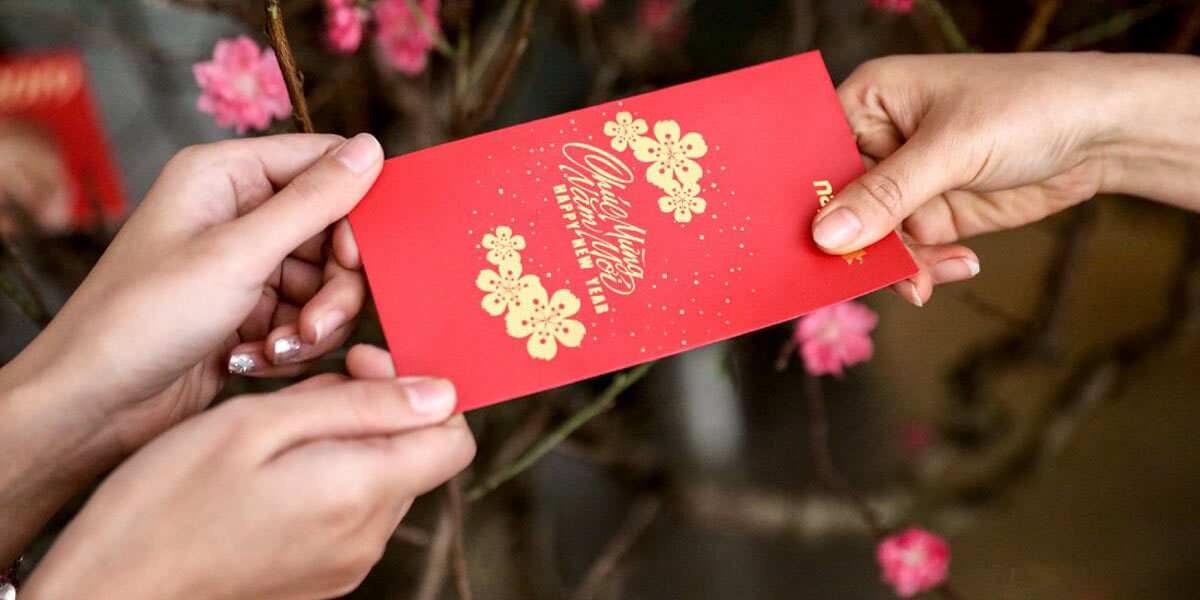Denominations of Vietnam money
Let’s take an example of the VND to USD exchange rate in this section. Currently:
1 USD = 24,540 VND
In recent years, the exchange rate has typically hovered around this mark. In Vietnam, physical coins are scarce nowadays. The primary means of transaction involve paper currency, polymer notes, or online money transfers.
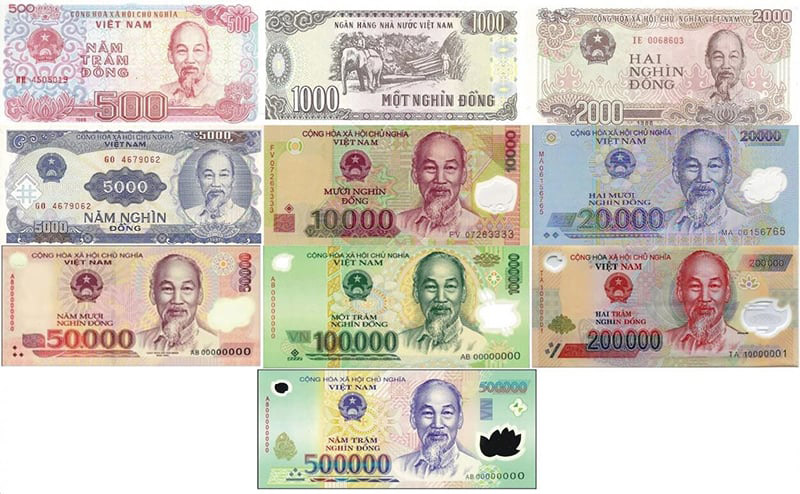
Vietnamese dong denominations
The paper bills include lower denominations compared to the polymer notes. Below is a table showing these denominations and their conversion to USD based on the previously mentioned exchange rate:
|
VND |
USD |
|---|---|
|
1,000 |
0.041 |
|
2,000 |
0.081 |
|
5,000 |
0.2 |
|
10,000 |
0.41 |
|
20,000 |
0.81 |
|
50,000 |
2.04 |
|
100,000 |
4.07 |
|
200,000 |
8.15 |
|
500,000 |
20.37 |
As you can see, Vietnam's currency is organized into easily memorable denominations of 1 - 2 - 5, corresponding to thousands, tens of thousands, and hundreds of thousands. The smallest denomination in Vietnamese currency is the 1,000 VND, while the largest is the 500,000 VND.
Current exchange rate
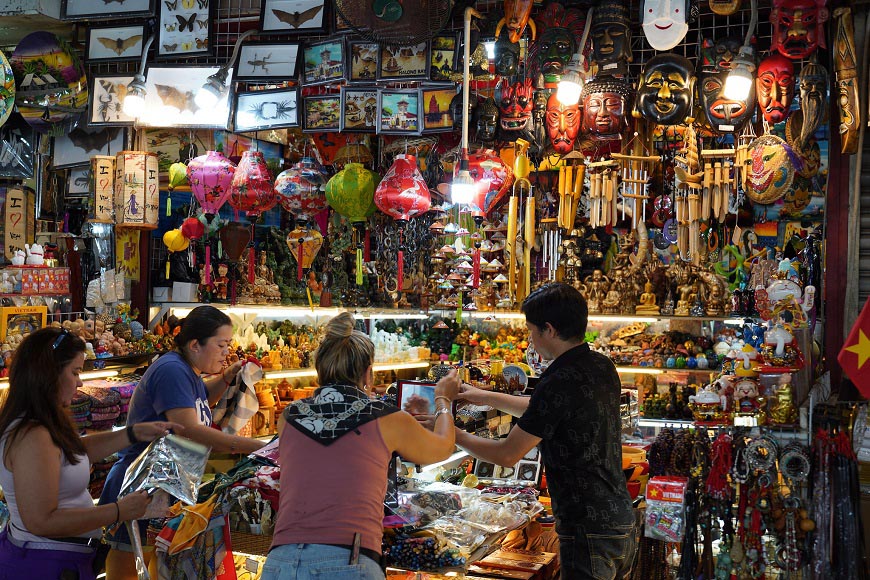
Vietnam currency exchange rate
To make things easier, here is a conversion table for the top 10 most traded currencies in the world to VND:
|
Currencies |
Exchanging rates |
|---|---|
|
US Dollar (USD) |
1 USD = 24,540 VND |
|
Euro (EUR) |
1 EUR = 26,697 VND |
|
Japanese yen (JPY) |
100 JPY = 16,615 VND |
|
Pound sterling (GBP) |
1 GBP = 31,136 VND |
|
Australian dollar (AUD) |
1 AUD = 16,089 VND |
|
Canadian dollar (CAD) |
1 CAD = 18,143 VND |
|
Swiss franc (CHF) |
1 CHF = 28,402 VND |
|
Chinese renminbi (CNH) |
1 CNH = 3,408 VND |
|
Hong Kong dollar (HKD) |
1 HKD = 3,136 VND |
|
New Zealand dollar (NZD) |
1 NZD = 15,018 VND |
Symbols on banknotes
The Vietnamese dong is characterized by:
-
Front side: Portrait of President Ho Chi Minh; National Emblem; denomination in both numerical and written form; the inscription ‘SOCIALIST REPUBLIC OF VIETNAM’.
-
Back side: The text “STATE BANK OF VIETNAM’, the numerical and written denomination, and printed Vietnam images.
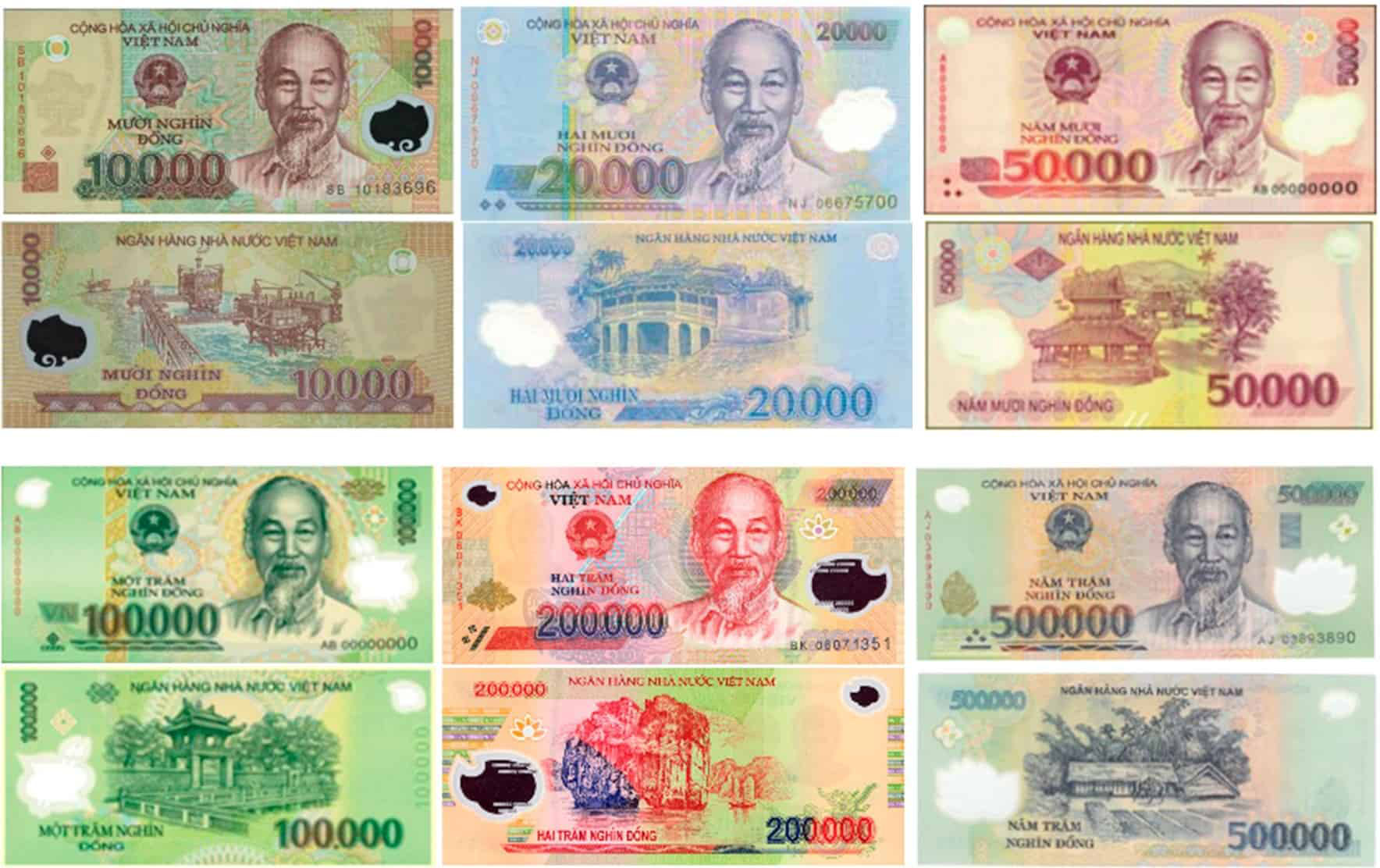
Symbols in Vietnam banknotes explanation
On each banknote denomination, the printed images feature symbols closely associated with the country of Vietnam in 20 centuries:
|
VND |
Image |
|---|---|
|
1,000 |
Workers on elephants extracting wood in the Central Highlands |
|
2,000 |
Female workers at the Nam Dinh Textile Factory – once the largest textile mill in Indochina. |
|
5,000 |
The Tri An Hydroelectric Plant on the Đồng Nai River |
|
10,000 |
The Bach Ho Oil Field in the Cuu Long Basin |
|
20,000 |
Bridge Pagoda (Hoi An) |
|
50,000 |
Luong Dinh and Phu Van Pavilion (Hue's ancient capital) |
|
100,000 |
Temple of Literature (Hanoi) |
|
200,000 |
Halong Bay UNESCO Heritage Site (Halong) |
|
500,000 |
Ho Chi Minh president thatched cottage (Nghe An) |
How to exchange
Presently, the majority of payment transactions in Vietnam can be conducted through cards and online methods. Nevertheless, cash remains highly useful if you intend to immerse yourself in exploring local culture and engage in traditional market transactions.
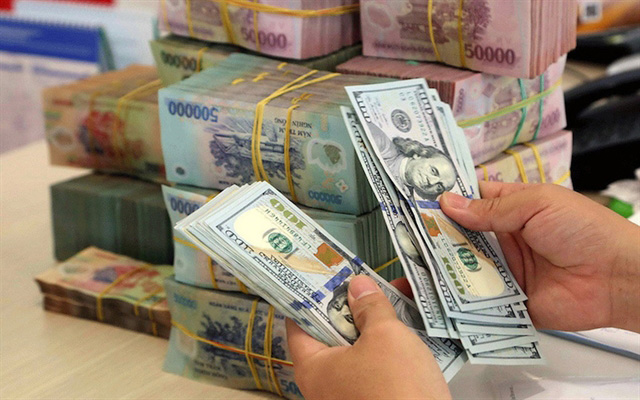
Ways to exchange Vietnamese dong
When seeking to exchange currency for the Vietnamese dong, you can consider trying the following approaches::
-
At the airport: Upon arriving at international airports, you can easily locate currency exchange kiosks or ATMs.
-
City ATMs: You can use Google Maps to locate ATMs for cash withdrawals in downtown or shopping centers.
-
Banks: Similar to ATMs, you can directly withdraw money at the bank if you aim for an official exchange rate. However, this might involve additional procedures.
-
Exchanging with locals: You can inquire with the hotel staff, ask your tour guide, or exchange money at currency exchange shops in the city center.
-
Visiting gold and jewelry shops: If needed, you can exchange currency at these establishments while shopping.
Helpful tips for using money in Vietnam
Lastly, to help you become adept at using money in Vietnam, I have some useful information for you here:
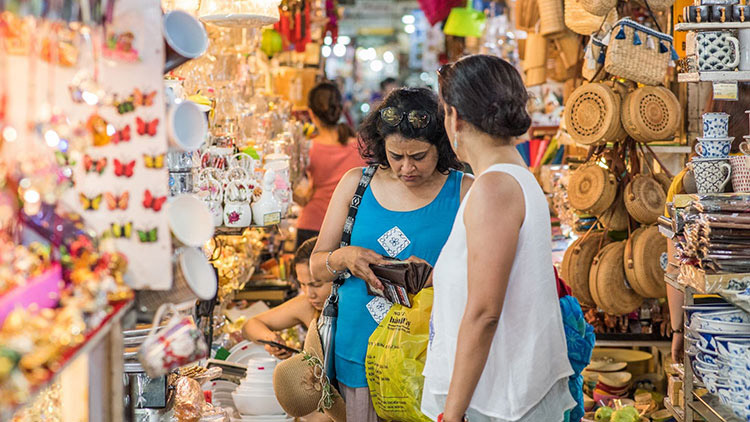
Tips for using money in Vietnam
-
Some places still accept the use of US dollars, such as hotels with a 3-star rating or higher, international border checkpoints, exclusive entertainment zones for foreigners, and ticket offices for airlines, maritime, and tourism. However, you should prepare sufficient Vietnamese dong for expenses.
-
If you are aiming for a favorable exchange rate, keep an eye on currency fluctuations before you start your journey and exchange money ahead of time.
-
It is essential to check if your card is compatible with local ATMs before traveling to Vietnam.
-
When intending to use your credit or debit card in Vietnam, you should notify your bank beforehand to avoid potential account flags for unusual transactions.
-
To smoothly facilitate currency exchange at legally permitted foreign exchange locations, ensure you carry your flight ticket, passport, visa, or other immigration documents.
-
Opt for exchanging money at trustworthy locations like banks, airports, ATMs, or with individuals you genuinely trust.
-
I recommend keeping various denominations of currency for shopping, including small notes.
-
When making payments in Vietnam, it is common to use currency notes ranging from 20,000 VND to 200,000 VND.
-
Be mindful when differentiating between the 20,000 VND and 500,000 VND banknotes in your transactions, as they share a similar color but hold a considerable difference in value. You should take a close look at the numerical figures before conducting any transactions.
Want to explore further? Check out our post about travel guide to Vietnam!
Above is all the essential information about money in Vietnam and how to use the Vietnamese currency. If you have any further questions, feel free to comment or message New Asia Tours for quick and hassle-free advice for your journey to Vietnam.






